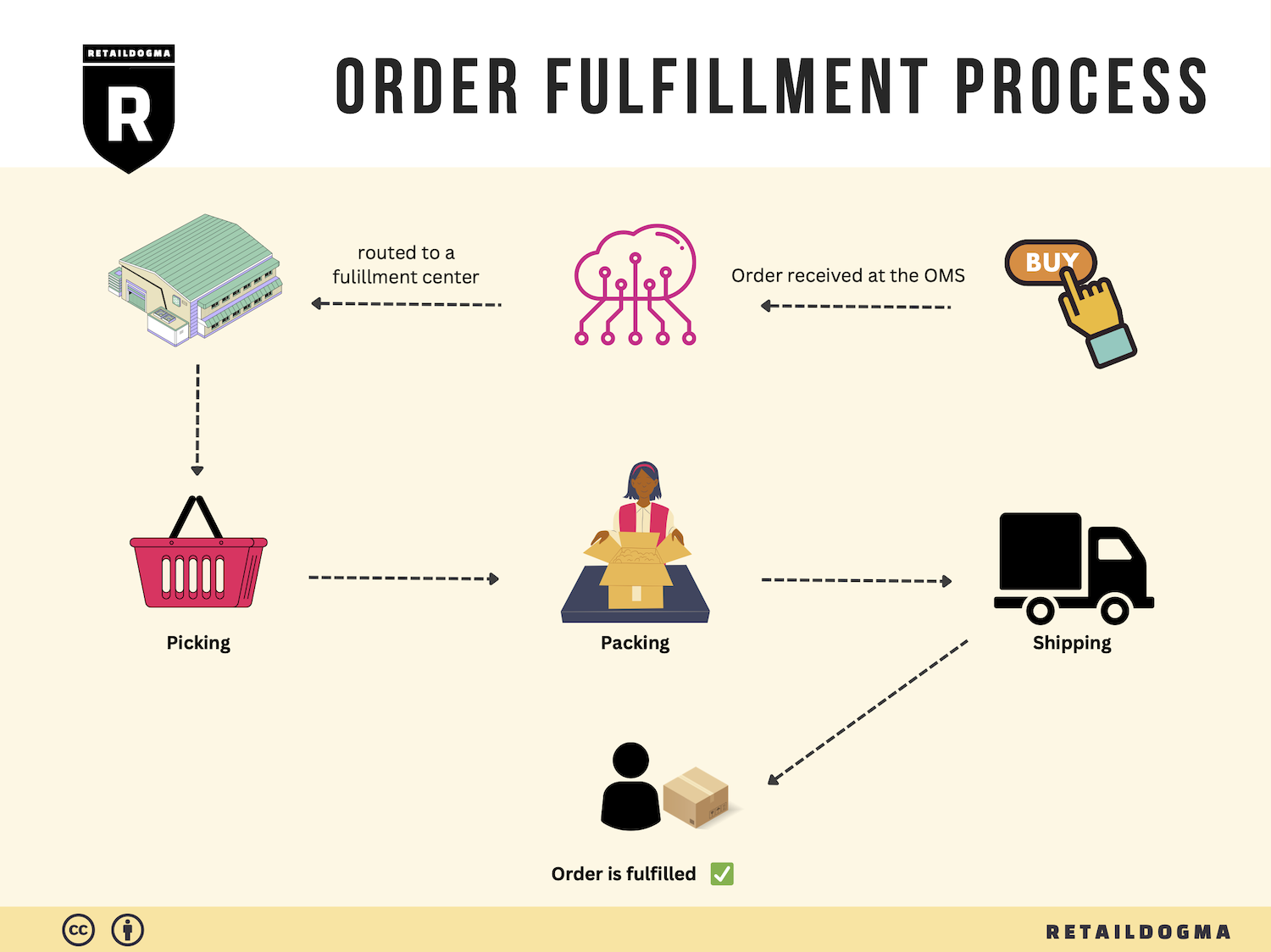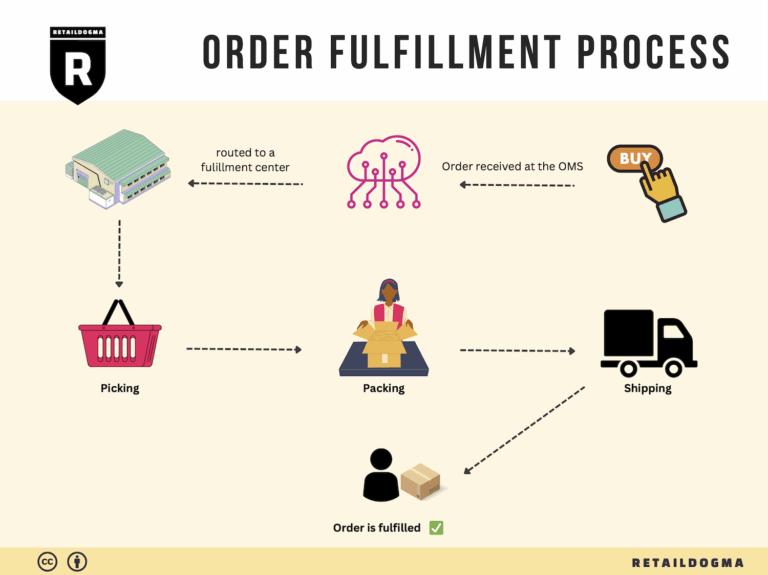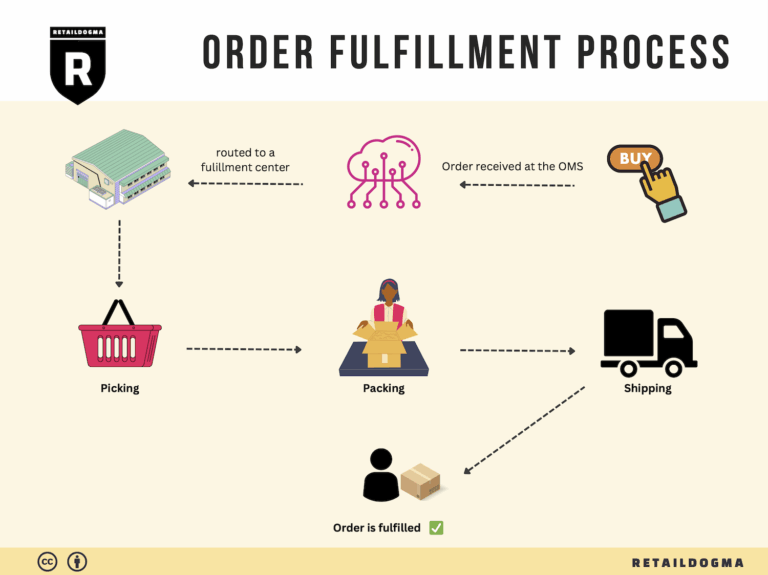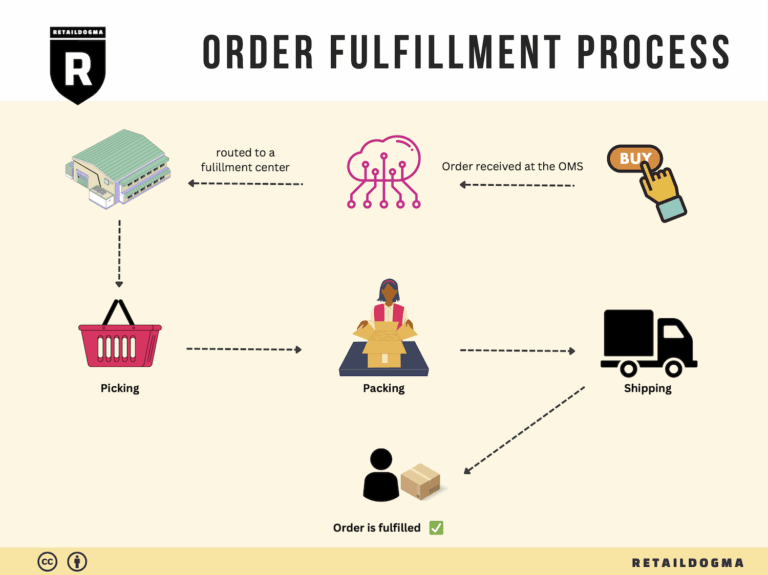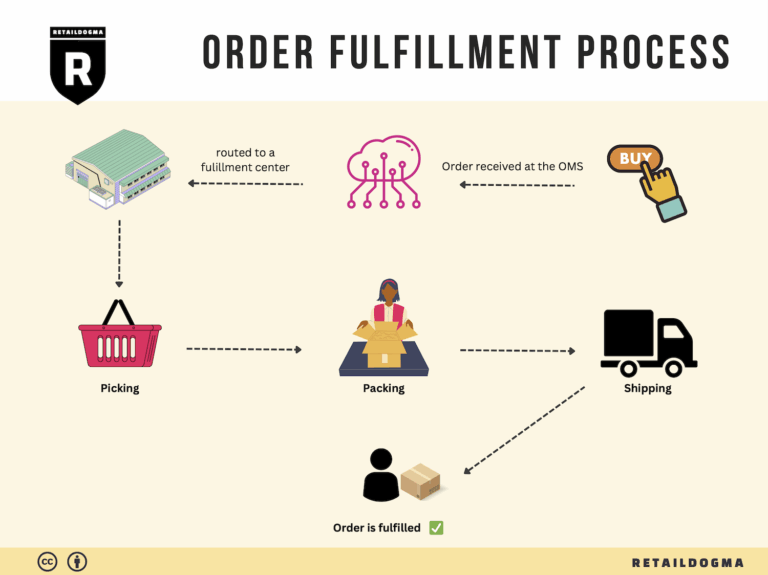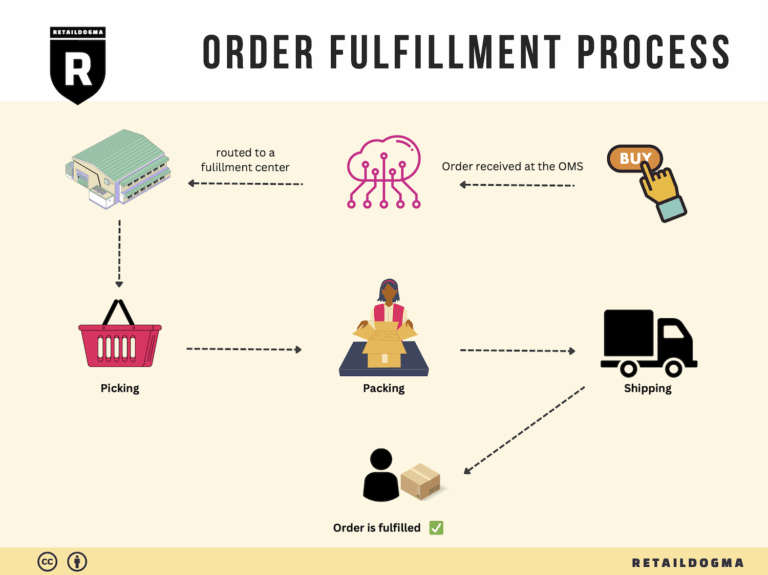What Is A Fulfillment Center? A Complete Guide (2025)
What is E-commerce Fulfillment? An Introduction for Growing Businesses
Understanding the Challenges of E-commerce Fulfillment
As your online business grows, the excitement of increased sales can quickly turn into a daunting challenge—packing and shipping orders efficiently. Many entrepreneurs find themselves overwhelmed by the logistics of getting products to customers on time, which can detract from focusing on core business activities like marketing and product development. This is where e-commerce fulfillment comes into play.
E-commerce fulfillment is the comprehensive process of getting a product from your inventory to a customer’s doorstep. It encompasses various tasks, including inventory management, order processing, packing, and shipping. For growing businesses, optimizing this process is crucial not only for maintaining customer satisfaction but also for scaling operations effectively.
What This Guide Covers
In this guide, we will delve into the various models of e-commerce fulfillment, helping you to identify which might best suit your business needs. Two of the most common models are Third-Party Logistics (3PL) and Fulfillment by Amazon (FBA). Each model has its unique advantages, capabilities, and pricing structures that can significantly impact your logistics strategy.
We will also explore the core services provided by fulfillment partners, which typically include warehousing, inventory management, order processing, and shipping. Understanding these services will enable you to assess what you need and what your chosen partner can provide.
Choosing the right fulfillment partner is a critical decision for any growing business. We will guide you through the key factors to consider when evaluating potential partners, including their technology capabilities, geographical reach, and customer service standards.
Additionally, pricing is a significant aspect of any fulfillment strategy. This guide will break down the different pricing models you might encounter, helping you to understand how costs are structured and how they can affect your bottom line.
Empowering Your Logistics Decisions
Ultimately, the goal of this guide is to empower you to make informed decisions about your e-commerce logistics. By understanding the ins and outs of fulfillment processes and the options available, you can streamline your operations, reduce costs, and enhance customer satisfaction. With the right knowledge and strategies in place, you can focus on scaling your business with confidence, knowing that your fulfillment needs are in capable hands.
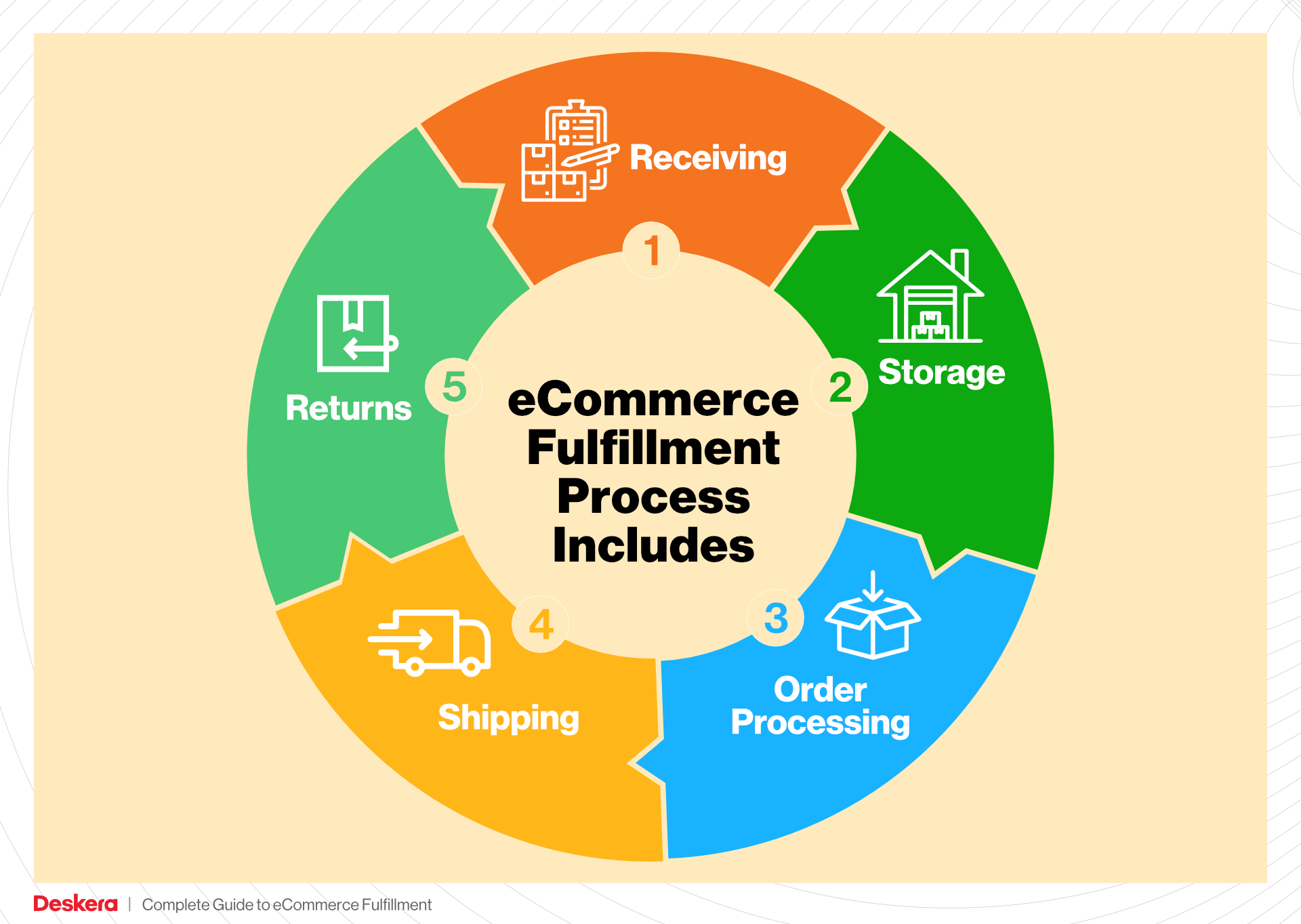
What You’ll Learn In This Guide
- What is E-commerce Fulfillment? An Introduction for Growing Businesses
- The Order Fulfillment Process: From ‘Buy’ Button to Customer’s Door
- Comparing Fulfillment Models: In-House vs. 3PL vs. Dropshipping
- A Deep Dive into Amazon FBA: Pros, Cons, and Who It’s For
- Core Services Offered by Fulfillment Centers
- How to Choose a Fulfillment Partner: A 6-Point Checklist
- Understanding Fulfillment Pricing: A Breakdown of Common Fees
- Frequently Asked Questions (FAQs) about Fulfillment
- Conclusion: Is Outsourcing Fulfillment the Right Move for Your Business?
- Important Disclaimer
The Order Fulfillment Process: From ‘Buy’ Button to Customer’s Door
1. Receiving Inventory
The order fulfillment process begins with receiving inventory, where products arrive at the fulfillment center from suppliers or manufacturers. This step is critical as it sets the foundation for the entire logistics operation. During this phase, products are checked against purchase orders to ensure accuracy in terms of quantity and quality.
Key terms associated with this step include SKU (Stock Keeping Unit), which is a unique identifier for each product. Properly managing SKUs during the receiving process helps in tracking inventory levels and aids in efficient storage and retrieval later on. Accurate receiving is vital as discrepancies can lead to stockouts or overstock situations, which can significantly impact sales and customer satisfaction.
2. Warehouse Storage
Once inventory is received, the next step is warehouse storage. Products are organized and stored in designated locations within the fulfillment center. This step is essential for maintaining an orderly environment that facilitates quick access to products when orders are placed.
Effective storage strategies often employ ABC analysis, where inventory is categorized based on its turnover rate. High-demand products (A items) are stored closer to packing areas for quick access, while slower-moving items (C items) can be stored further away. This organization not only optimizes space but also enhances operational efficiency, allowing for faster order processing times.
3. Order Picking
After a customer places an order, the fulfillment center moves to the order picking stage. In this process, warehouse associates or automated systems retrieve items from their storage locations based on the order details. This step is crucial as it directly affects the speed and accuracy of fulfilling customer orders.

A key component of order picking is the use of pick lists, which outline the items and quantities needed for each order. Effective order picking strategies, such as batch picking or zone picking, can significantly reduce the time spent retrieving products. Accurate picking is vital to ensure that customers receive the correct items, thereby minimizing returns and enhancing customer satisfaction.
4. Order Packing
Once items are picked, they proceed to the order packing stage. During this phase, products are carefully packaged to ensure they are protected during transit. Packing is essential not only for safeguarding the products but also for providing a positive unboxing experience for customers.
Key considerations during packing include using the right packaging materials and labeling each package correctly. The use of dimensional weight pricing is also important here, as shipping costs can be influenced by the size and weight of the package. Efficient packing processes can lead to reduced shipping costs and improved delivery times, contributing to overall customer satisfaction.
5. Shipping & Delivery
The final step in the order fulfillment process is shipping and delivery. After packing, orders are labeled and sorted for dispatch. This stage is critical as it determines how quickly and efficiently products reach the customer’s door.
Shipping methods can vary based on customer preferences and the nature of the products. Utilizing last-mile delivery solutions can enhance the speed and reliability of deliveries, which is increasingly important in today’s e-commerce landscape. Effective shipping strategies not only ensure timely delivery but also provide customers with tracking information, enhancing their overall experience.
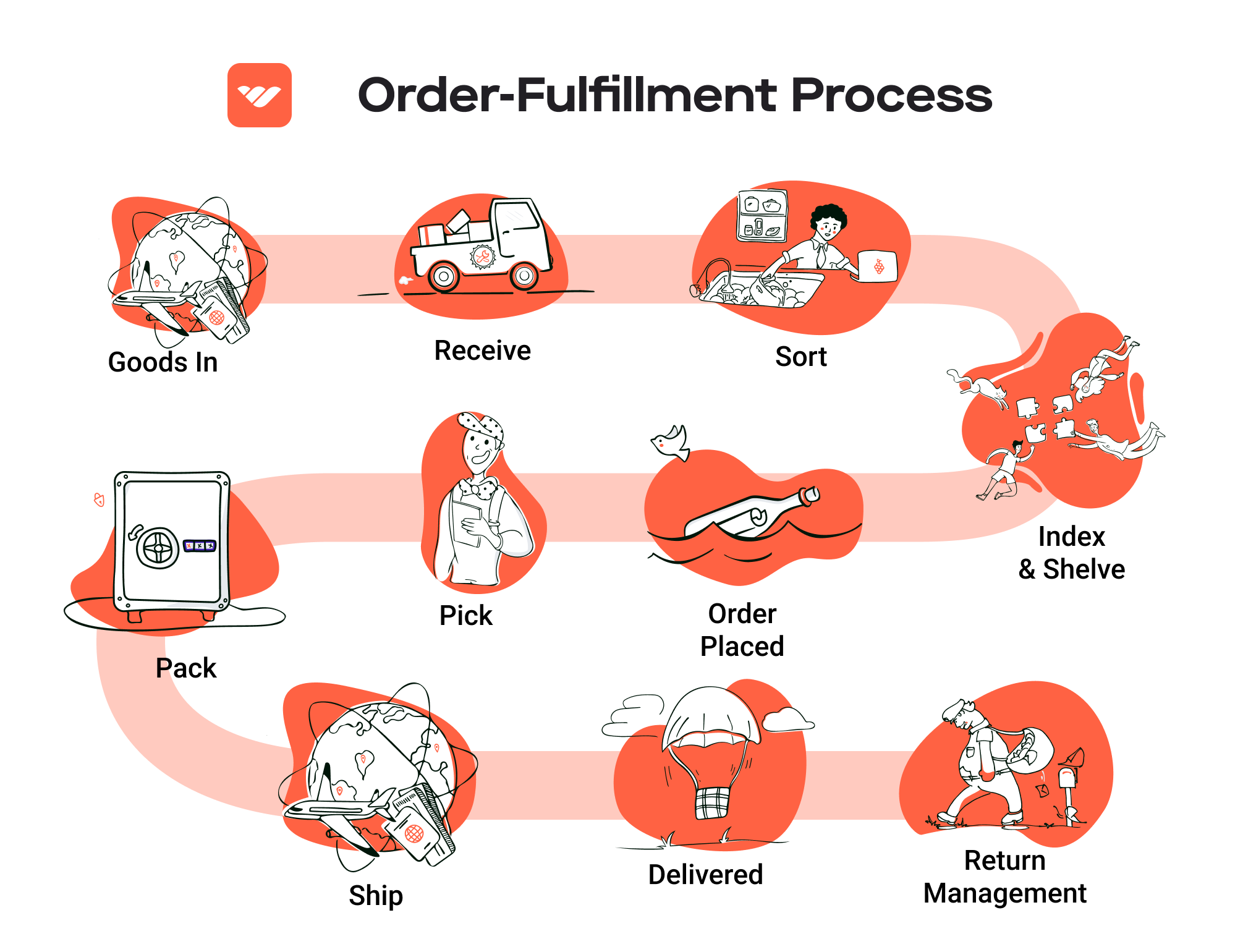
In conclusion, the order fulfillment process is a complex but essential aspect of e-commerce operations. By understanding and optimizing each step—from receiving inventory to shipping and delivery—businesses can improve efficiency, reduce costs, and ultimately provide better service to their customers.
Comparing Fulfillment Models: In-House vs. 3PL vs. Dropshipping
Fulfillment Model Comparison
| Model | Who Handles Inventory | Best For (Business Stage) | Key Advantage | Key Disadvantage |
|---|---|---|---|---|
| In-House Fulfillment | The business itself | Established businesses | Complete control over operations | High overhead costs and resource demands |
| Third-Party Logistics (3PL) | An external logistics provider | Growing and scaling businesses | Scalability and expertise in logistics | Less control over inventory management |
| Dropshipping | Supplier or manufacturer | Startups and small businesses | Low upfront investment and risk | Lower profit margins and potential quality issues |
In-House Fulfillment
In-house fulfillment is a model where the business manages its entire inventory and logistics operations. This includes warehousing, picking, packing, and shipping products directly to customers. For established businesses that have the necessary resources and operational capacity, in-house fulfillment can provide a significant advantage. The key benefit is the complete control over the fulfillment process, allowing for customized packaging, branding, and customer service that can enhance the overall customer experience. Businesses can manage their inventory levels closely, respond quickly to customer demands, and maintain strict quality control.
However, this model comes with considerable overhead costs, including warehousing expenses, labor, and technology investments. Additionally, managing logistics can divert focus from core business activities such as marketing and product development. The resource demands can become overwhelming, especially during peak seasons, leading to potential fulfillment delays if not properly managed. Thus, while in-house fulfillment can be advantageous for businesses with established operations, it requires careful planning and investment.
Third-Party Logistics (3PL)
Third-party logistics (3PL) involves outsourcing fulfillment operations to a specialized logistics provider. This model is particularly advantageous for growing businesses that need to scale quickly without the burden of managing logistics themselves. By leveraging a 3PL, businesses can benefit from the provider’s expertise in warehousing, transportation, and inventory management, allowing them to focus on core competencies like sales and product development. 3PLs often have established networks and advanced technology that can enhance efficiency, reduce shipping times, and improve customer satisfaction.
One of the primary advantages of using a 3PL is scalability. As a business grows, it can easily adjust its logistics needs without the hassle of expanding its own infrastructure. However, the key disadvantage is the potential loss of control over inventory management and customer service. Relying on an external provider can lead to challenges in communication and responsiveness, which may impact the overall customer experience. Businesses must carefully select their 3PL partners and maintain clear lines of communication to mitigate these risks.
Dropshipping
Dropshipping is a fulfillment model where the retailer does not hold inventory but instead relies on suppliers or manufacturers to ship products directly to customers. This model is ideal for startups and small businesses with limited capital, as it requires minimal upfront investment and significantly reduces the risks associated with inventory management. Retailers can offer a wide range of products without the need for a physical warehouse, making it easy to test new markets or product lines.
The primary advantage of dropshipping is the low overhead cost, as there are no warehousing expenses or inventory risks. Retailers can focus on marketing and sales, leveraging e-commerce platforms to reach customers. However, the key disadvantage lies in lower profit margins, as suppliers often charge higher prices for dropshipped goods. Additionally, quality control can be an issue since the retailer has limited oversight over the product and fulfillment process. This can lead to inconsistencies in product quality and customer service, potentially harming the retailer’s reputation. Therefore, while dropshipping offers a low-risk entry into e-commerce, it requires careful supplier selection and management to ensure a satisfactory customer experience.
A Deep Dive into Amazon FBA: Pros, Cons, and Who It’s For
Understanding Fulfillment by Amazon (FBA)
Fulfillment by Amazon (FBA) is a service provided by Amazon that allows e-commerce sellers to leverage Amazon’s extensive logistics and fulfillment network. By using FBA, sellers can store their products in Amazon’s fulfillment centers, and Amazon takes care of storage, packing, shipping, and even customer service on behalf of the sellers. This service not only simplifies the logistics of running an e-commerce business but also provides access to Amazon’s vast customer base, enhancing visibility and sales potential.
How FBA Works
-
Registration and Setup: Sellers start by signing up for an Amazon Seller account and selecting the FBA option. They can then create product listings and choose which products they want to fulfill through FBA.
-
Shipping Inventory: After setting up, sellers ship their inventory to one or more of Amazon’s fulfillment centers. Amazon provides specific guidelines on how to prepare and package these items to ensure they meet their standards.
-
Storage and Management: Once received, Amazon stores the products in their warehouse. Sellers can manage their inventory through the Amazon Seller Central dashboard, which provides real-time updates on stock levels and order statuses.
-
Order Fulfillment: When a customer places an order, Amazon picks, packs, and ships the product directly to the customer. FBA products are eligible for Amazon Prime, which can significantly enhance their visibility and attractiveness to customers.
-
Customer Service and Returns: Amazon also handles customer service inquiries related to FBA products and manages returns, relieving sellers of these often time-consuming tasks.
Pros of FBA
1. Prime Eligibility
One of the standout advantages of FBA is that products fulfilled by Amazon are eligible for Amazon Prime. This means sellers can reach millions of Prime members who prefer fast, reliable shipping options. The Prime badge can significantly increase the likelihood of purchases.
2. Customer Trust
Selling through FBA enhances credibility. Customers are more likely to trust products that are backed by Amazon’s fulfillment network, which is known for its efficiency and reliability. This trust can lead to higher conversion rates and repeat business.
3. Multi-Channel Fulfillment
FBA isn’t limited to Amazon’s marketplace. Sellers can also use FBA to fulfill orders from their own websites or other sales channels. This multi-channel fulfillment capability allows sellers to streamline operations across different platforms, centralizing their inventory and shipping processes.
Cons of FBA
1. High Fees
While FBA offers significant advantages, it comes at a cost. Sellers are subject to various fees, including storage fees for inventory held at Amazon warehouses and fulfillment fees for each item shipped. These costs can eat into profit margins, particularly for low-priced items.
2. Strict Inventory Rules
Amazon has stringent rules regarding inventory management. For instance, products must be in new condition to be eligible for FBA, and sellers must adhere to strict packaging and labeling requirements. Failure to comply with these guidelines can lead to penalties or even suspension from the program.
3. Commingling Risks
FBA products from different sellers may be commingled in Amazon’s warehouses, which poses a risk. If a customer returns a product, they may return a different seller’s item, which can lead to complications and potential losses for sellers if they receive damaged or unsellable items back.
Who is FBA Best For?
FBA is particularly beneficial for:
-
Small to Medium-Sized Businesses: Businesses that want to scale quickly without investing heavily in warehousing and logistics can leverage FBA to reach a wider audience with less operational hassle.
-
Sellers with High Turnover Products: If your products have a high turnover rate and are in demand, the benefits of FBA can significantly outweigh the costs, especially when factoring in the increased visibility through Prime.
-
Entrepreneurs Looking to Expand: For entrepreneurs seeking to grow their e-commerce operations without the complexities of logistics, FBA offers a streamlined solution that allows them to focus on marketing and product development.
-
Multi-Channel Sellers: If you sell on multiple platforms, FBA can simplify your fulfillment process by managing inventory and shipping from a single source, which can save time and reduce errors.
In conclusion, Fulfillment by Amazon offers a powerful opportunity for e-commerce businesses to enhance their operational efficiency and customer reach. However, it’s essential for sellers to weigh the benefits against the costs and constraints of the program to determine if it aligns with their business objectives. By understanding the nuances of FBA, businesses can make informed decisions that support their growth and success in the competitive e-commerce landscape.
Core Services Offered by Fulfillment Centers
Inventory Management & Warehousing
One of the cornerstone services provided by fulfillment centers is inventory management and warehousing. This involves the systematic storage, tracking, and management of products within a dedicated space. Fulfillment centers utilize advanced technologies and software systems to monitor stock levels, manage restocking processes, and ensure that inventory is organized for efficient retrieval.
Benefits:
For e-commerce businesses, effective inventory management is crucial. It helps prevent stockouts, which can lead to lost sales, and overstock situations, which can tie up capital and incur storage costs. By outsourcing inventory management to a fulfillment center, businesses gain access to real-time data regarding inventory levels, allowing for informed decision-making. Additionally, fulfillment centers often employ just-in-time inventory systems, which can reduce overhead costs and enhance cash flow. This service is particularly beneficial for businesses looking to scale, as it allows them to focus on sales and marketing rather than logistical challenges.
Pick and Pack Services
Pick and pack services are at the heart of fulfillment operations. This process involves selecting products from inventory (the “pick”) and packaging them for shipment (the “pack”). Fulfillment centers employ sophisticated algorithms and picking technologies to streamline this process, ensuring that items are selected accurately and efficiently.
Benefits:
For e-commerce businesses, the pick and pack process directly influences order fulfillment speed and accuracy, both of which are critical to customer satisfaction. Fast and precise picking reduces lead times, enhancing the likelihood of repeat purchases and positive reviews. Moreover, fulfillment centers often utilize automated systems that minimize human error, reducing the costs associated with returns and exchanges due to incorrect shipments. The ability to quickly fulfill orders allows businesses to scale operations without a corresponding increase in labor costs, making it a strategic advantage in a competitive marketplace.
Kitting and Assembly
Kitting and assembly refer to the process of grouping multiple products together into a single package or preparing components to create a finished product. This service is particularly useful for businesses that offer bundles, gift sets, or complex products that require assembly before shipping.
Benefits:
The kitting and assembly service can significantly enhance the value proposition of an e-commerce business. By providing customers with ready-to-ship bundles, businesses can increase average order value and improve customer satisfaction. Moreover, fulfillment centers often have the capability to handle complex assembly tasks that may be beyond the capacity of a small business. This allows businesses to offer a wider range of products without the need for additional in-house resources. Additionally, outsourcing this function helps businesses maintain flexibility and agility, enabling them to respond quickly to market trends and customer demands.
Returns Management (Reverse Logistics)
Returns management, often referred to as reverse logistics, is the process of handling returned goods efficiently. This service includes receiving returned items, inspecting them, restocking them when appropriate, and managing customer refunds or exchanges.
Benefits:
A well-structured returns management system is vital for maintaining customer trust and satisfaction. In the e-commerce landscape, where customers expect hassle-free returns, effective reverse logistics can differentiate a brand from its competitors. Fulfillment centers streamline this process by quickly processing returns and minimizing the time products spend in limbo, which can enhance inventory turnover rates. For businesses, this means not only retaining customers but also being able to resell returned items promptly, thus reducing losses. Furthermore, a robust returns management system can provide valuable insights into product performance and customer preferences, informing future inventory and marketing strategies.
In summary, partnering with a fulfillment center allows e-commerce businesses to leverage specialized services that enhance operational efficiency, improve customer satisfaction, and facilitate growth. By focusing on core services like inventory management, pick and pack, kitting and assembly, and returns management, businesses can scale their operations effectively while maintaining a competitive edge in the ever-evolving e-commerce landscape.
How to Choose a Fulfillment Partner: A 6-Point Checklist
Location & Warehouse Network
The geographical location of your fulfillment partner is crucial for efficient shipping and delivery times. A strategically placed warehouse can significantly reduce shipping costs and enhance customer satisfaction through faster delivery.
Why It Matters:
– Proximity to your customer base can lead to lower shipping fees and quicker delivery times.
– A strong network of warehouses allows for better inventory distribution and management.
Questions to Ask:
1. Where are your warehouses located, and how does this align with my target market?
2. Do you have multiple facilities to cover various regions effectively?
3. How do you manage inventory across your network of warehouses?
Technology & Integrations
In today’s e-commerce landscape, technology plays a pivotal role in streamlining operations. The right fulfillment partner should offer robust technology solutions that integrate seamlessly with your existing systems.
Why It Matters:
– Advanced technology can enhance order accuracy, inventory management, and real-time tracking.
– Integrations with e-commerce platforms (like Amazon Seller Central) can simplify your workflow.
Questions to Ask:
1. What type of order management system (OMS) do you use, and how does it integrate with my current systems?
2. Do you offer real-time tracking for both inventory and shipments?
3. Can your technology scale as my business grows?
Specializations (e.g., Cold Storage, Oversized Items)
Depending on your product range, you may need a fulfillment partner that specializes in certain types of storage or handling. This is particularly important for businesses dealing with perishable goods, hazardous materials, or oversized items.
Why It Matters:
– Specialized fulfillment can ensure compliance with regulations and best practices for specific product categories.
– Proper handling and storage can minimize damage and enhance product integrity.
Questions to Ask:
1. What types of specialized storage or handling do you offer?
2. Are you equipped to manage compliance with regulations specific to my products?
3. How do you ensure the quality and safety of specialized items during storage and shipping?
Scalability & Capacity
As your business grows, your fulfillment needs will evolve. It’s essential to choose a partner that can accommodate this growth without compromising service quality.
Why It Matters:
– A scalable fulfillment partner can handle fluctuations in order volume, whether due to seasonal demand or rapid growth.
– Ensuring that a partner has sufficient capacity prevents delays and maintains customer satisfaction.
Questions to Ask:
1. How do you handle peak seasons and increased order volumes?
2. Can you provide examples of how you’ve supported clients during growth phases?
3. What measures do you have in place to ensure consistent service quality as you scale?
Pricing and Contracts
Understanding the cost structure and contractual obligations is vital for maintaining a healthy bottom line. Transparent pricing models can help you avoid unexpected expenses.
Why It Matters:
– Clear pricing helps in budgeting and forecasting expenses.
– Long-term contracts can lock you into unfavorable terms if your needs change.
Questions to Ask:
1. Can you provide a detailed breakdown of your pricing model, including any hidden fees?
2. What are the terms of your contracts, and do you offer flexibility for changes?
3. How do you handle pricing adjustments during the contract period?
Customer Support & Reviews
Effective customer support is essential for resolving issues promptly and maintaining operational efficiency. Additionally, checking reviews and testimonials can provide insights into a partner’s reliability and service quality.
Why It Matters:
– Responsive customer support can mitigate disruptions and improve the overall experience.
– Positive reviews can indicate a partner’s capability and commitment to service.
Questions to Ask:
1. What support channels do you offer (e.g., phone, email, chat), and what are your response times?
2. Can you provide references or case studies from current or past clients?
3. How do you handle customer complaints or fulfillment issues?
By carefully considering these six points and asking the right questions, you can select a fulfillment partner that aligns with your business goals, enhances operational efficiency, and ultimately drives customer satisfaction. Building a successful partnership is not just about logistics; it’s about creating a seamless experience for your customers that translates into long-term growth for your business.
Understanding Fulfillment Pricing: A Breakdown of Common Fees
Initial Setup Fees
When you begin using Amazon’s fulfillment services, an initial setup fee may apply. This fee typically covers the costs associated with onboarding your products into the Fulfillment by Amazon (FBA) system. The setup process includes creating your product listings, configuring your account settings, and integrating your inventory management system with Amazon’s platform.
The calculation of initial setup fees varies based on the complexity of your product catalog and the specific requirements of your business. For instance, if you have a large number of SKUs or need additional support for product photography and listing optimization, the fees may be higher. It’s essential to clarify these costs upfront to avoid surprises.
Receiving Fees
Receiving fees are charged when your products arrive at an Amazon fulfillment center. This fee covers the labor and resources required to unload, inspect, and process your inventory. The fee is typically calculated per unit received, meaning that the more items you send, the higher your receiving fees will be.
For example, if you send 100 units of a product, you will be charged a fee for each unit that is received and processed into the system. Additionally, if your items require special handling or are oversized, the receiving fees may increase accordingly. Understanding these costs can help you plan your shipments more effectively.
Storage Fees (per pallet/bin)
Storage fees are incurred for the space your products occupy within the fulfillment center. Amazon charges storage fees on a monthly basis, calculated either per pallet or per bin, depending on how your products are stored. Generally, the fees are assessed based on the cubic feet of storage space utilized.
Amazon has two types of storage fees: standard monthly storage fees and long-term storage fees. The standard fees apply to inventory stored for less than six months, while long-term fees apply to items that remain in the fulfillment center for over 365 days. To minimize storage costs, it is crucial to manage your inventory levels effectively and regularly analyze sales data to ensure that you are not overstocking items.
Pick & Pack Fees (per item/order)
Pick and pack fees are charged each time an order is fulfilled. This fee covers the costs of locating and picking your products from the shelves, packing them for shipment, and preparing them for dispatch. The pick and pack fees are typically calculated per item, meaning that if a customer orders multiple items, the fees will accumulate based on the total number of items in the order.
For instance, if a customer orders three different products, you will incur pick and pack fees for each of those items. Understanding these fees is essential for pricing your products competitively while maintaining your profit margins.
Shipping Fees
Shipping fees represent the cost of delivering your products from the fulfillment center to the customer. These fees can vary based on several factors, including the destination, shipping speed selected by the customer, and the weight and dimensions of the package. Amazon uses a tiered pricing model for shipping fees, which means that larger or heavier packages will incur higher shipping costs.
Additionally, if you offer free shipping as part of your sales strategy, you will need to factor these shipping fees into your overall pricing and profit calculations. Understanding how shipping fees work and how they are calculated can help you make informed decisions about your pricing strategy and fulfillment options.
Tips for Getting an Accurate Quote
-
Understand Your Needs: Before seeking a quote, clearly outline your fulfillment needs, including the types of products you sell, the volume of inventory, and your expected order frequency.
-
Consult with Amazon: Reach out to Amazon’s seller support for guidance on potential fees based on your product specifics. They can provide tailored information relevant to your business model.
-
Utilize Tools: Take advantage of Amazon’s FBA calculator, which allows you to estimate your fulfillment costs based on the specific parameters of your products.
-
Consider Additional Services: If you require additional services such as labeling, prep, or special handling, be sure to inquire about those fees as well, as they can significantly affect your total costs.
-
Regularly Review Costs: As your business scales, regularly review and compare fulfillment costs to ensure you are optimizing your logistics strategy and maintaining profitability.
By understanding these common fulfillment pricing models and their calculations, you can better manage your logistics costs and improve your overall operational efficiency.
Frequently Asked Questions (FAQs) about Fulfillment
1. What is the Amazon Fulfillment Center BTR1?
Amazon Fulfillment Center BTR1 is a state-of-the-art facility located in Baton Rouge, Louisiana. It utilizes advanced robotics technology to enhance the efficiency of order processing and delivery. This fulfillment center is designed to manage the storage, packing, and shipping of millions of products, ensuring fast and reliable delivery to customers.
2. How does the fulfillment process work at BTR1?
The fulfillment process at BTR1 involves several key steps:
1. Order Placement: A customer places an order on Amazon.
2. Order Processing: The system identifies the nearest fulfillment center with the product.
3. Picking: Robots and human associates collaborate to pick the items from the shelves.
4. Packing: Selected items are packed securely for shipping.
5. Shipping: Packages are labeled and sent to the appropriate delivery service for dispatch.
3. What technologies are used in BTR1?
BTR1 employs a combination of robotics and automation technologies, including robots like Hercules and Pegasus. These robots assist human workers in picking and packing products, streamlining operations and reducing the time it takes to fulfill orders. The facility also utilizes advanced inventory management systems to track product availability in real-time.
4. What is the difference between a warehouse and a fulfillment center?
A warehouse primarily serves as a storage facility for goods, while a fulfillment center is designed specifically for processing orders and shipping products directly to customers. Fulfillment centers focus on speed and efficiency in order handling, often incorporating advanced technology and logistics operations to enhance delivery times.
5. What is a 3PL (Third-Party Logistics)?
A 3PL, or third-party logistics provider, is a company that offers outsourced logistics services, including transportation, warehousing, and order fulfillment. Businesses often partner with 3PLs to leverage their expertise, technology, and network to enhance supply chain efficiency without investing in their own logistics infrastructure.
6. How much do fulfillment services cost?
The cost of fulfillment services can vary widely based on several factors, including the size and weight of the products, order volume, and the specific services required (e.g., storage, picking, packing, shipping). On average, businesses can expect to pay a combination of per-order fees, storage fees, and shipping costs. It’s advisable to request quotes from multiple providers to compare pricing structures.
7. How can businesses benefit from using BTR1?
By utilizing BTR1, businesses can access Amazon’s extensive logistics network, which allows for faster delivery times and improved customer satisfaction. This facility’s advanced technology also helps reduce operational costs and streamline order processing, enabling businesses to focus on growth and customer engagement rather than logistics.
8. What are the operational hours of BTR1?
BTR1 operates around the clock, with multiple shifts to ensure continuous processing of orders. This 24/7 operation allows for quick turnaround times and the ability to handle a high volume of orders, especially during peak seasons.
9. How can I track my order shipped from BTR1?
Customers can track their orders through the Amazon website or mobile app. Once an order is shipped, Amazon provides tracking information via email, allowing customers to monitor the status of their delivery in real-time.
10. What should I consider when choosing a fulfillment center?
When selecting a fulfillment center, consider factors such as location, technology integration, shipping options, scalability, and pricing. It’s essential to ensure that the fulfillment center can meet your specific business needs, especially during peak seasons or growth phases, to maintain customer satisfaction and operational efficiency.
Conclusion: Is Outsourcing Fulfillment the Right Move for Your Business?
Evaluating the Outsourcing of Fulfillment
Outsourcing fulfillment can be a transformative decision for e-commerce businesses looking to scale efficiently. The primary benefits of utilizing a fulfillment service include significant time savings, enhanced scalability, and access to specialized expertise. By delegating the logistics of storage, packing, and shipping, business owners can redirect their focus toward strategic initiatives such as product development, marketing, and customer engagement.
Time is a precious commodity in the fast-paced world of e-commerce. A dedicated fulfillment partner can streamline operations, allowing businesses to fulfill orders more quickly and accurately. This agility not only boosts customer satisfaction but also enhances the overall shopping experience, creating loyalty and repeat business.
Scalability is another compelling reason to consider outsourcing. As your sales grow, so do the complexities of managing inventory, shipping logistics, and customer service. A capable fulfillment partner can adapt to your evolving needs, providing the infrastructure to handle increased order volumes without the need for significant investment in physical space or technology.
Moreover, partnering with a fulfillment service grants access to industry expertise and advanced technology. These partners often leverage cutting-edge systems and processes that can optimize shipping routes, reduce costs, and improve delivery times—benefits that are crucial in a competitive market.
However, it is essential to choose the right fulfillment partner. The success of this decision hinges on finding a provider that aligns with your business goals, understands your product needs, and can offer reliable support.
To determine if outsourcing fulfillment is the right step for your business, conduct a thorough audit of your current shipping process. Assess your operational challenges, customer expectations, and growth objectives. This strategic evaluation will provide clarity on whether a fulfillment partner can enhance your efficiency and scalability. Take the next step today—your growth may depend on it.
Important Disclaimer
⚠️ Important Disclaimer
The information in this guide is for educational purposes. Fulfillment services, pricing, and platform features change frequently. Always conduct your own due diligence and consult with providers directly before making business decisions.
